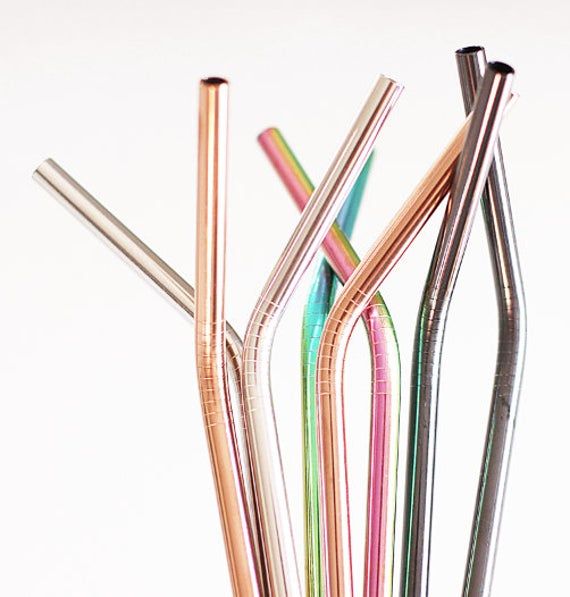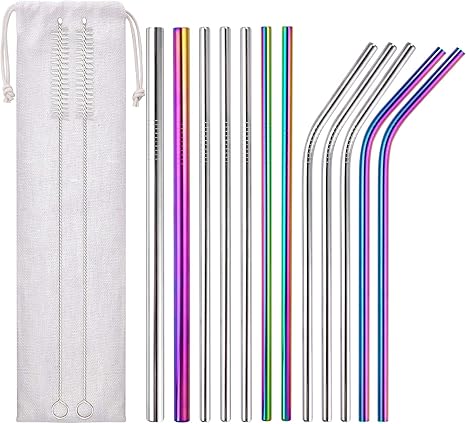Metal Straws: Complete Product Guide & Sourcing for 2025

9/15/2025 · 5 min read · Eco Products
🌱 Metal Straws: Complete Product Guide & Sourcing Roadmap for 2025
.webp)
Introduction
As the world continues to shift away from single-use plastics, metal straws have emerged as one of the most popular sustainable alternatives. Reusable, durable, and stylish, these straws aren’t just an eco-friendly swap — they’ve become a lifestyle product embraced by eco-conscious consumers, cafés, and retailers worldwide.
For entrepreneurs, importers, and e-commerce sellers, metal straws present a high-demand, low-risk product opportunity in 2025. This guide explores everything you need to know: product features, types, compliance standards, cost drivers, and most importantly, where to source them globally.

What Are Metal Straws?
Metal straws are reusable drinking straws made primarily from stainless steel. They’re designed to replace disposable plastic straws, offering the same functionality with far greater durability and a smaller environmental footprint.
Common Variants
- Straight straws – Classic design for everyday beverages.
- Bent straws – Angled at ~30–45° for ergonomic sipping.
- Wide straws – Larger diameter (10–12 mm) for smoothies, shakes, and bubble tea.
- Telescopic / collapsible straws – Portable, often sold with travel cases.
- Straw kits – Sets with cleaning brushes, silicone tips, and eco-friendly carry pouches.
Materials & Specifications
Material Types
- 304 Stainless Steel (18/8): Standard food-grade; rust-resistant, durable.
- 316 Stainless Steel: Premium option; higher corrosion resistance, often used in marine environments.
- Silicone tips: Optional add-ons for comfort, especially with hot beverages.
- Colored coatings (PVD, electroplated): Provide attractive finishes (gold, rainbow, black), but must pass food-contact safety tests.

Key Specifications to Define in RFQ
- Length: 20–25 cm (standard), shorter for tumblers.
- Diameter: 6–8 mm standard, 10–12 mm for bubble tea.
- Wall thickness: 0.4–0.6 mm for strength.
- Finish: Mirror polish, matte brushed, or color-plated.
- Edge treatment: Rounded / deburred ends to avoid injuries.
- Accessories: Cleaning brush, case (cloth, metal, or bamboo), gift packaging.
- Logo branding: Laser engraving or printing on straw or case.
Why Consumers Love Metal Straws
- Eco-friendly – Help reduce single-use plastic waste.
- Durable – Last for years with proper care.
- Hygienic – Dishwasher safe and easy to clean with brushes.
- Stylish – Available in multiple finishes and colors.
- Gift-worthy – Often sold in attractive sets for personal or corporate gifting.
Compliance & Safety Standards
Since metal straws are food-contact items, compliance is critical:
- EU: Regulation (EC) 1935/2004 on food contact materials; LFGB (Germany).
- USA: FDA food-contact safety; heavy metal migration tests.
- Global: RoHS (if coatings used), CE for accessory sets.
- Lab Tests: Ensure rust resistance, dishwasher durability, and coating adhesion.
Always request material certificates (304/316 SS) and third-party lab reports before finalizing suppliers.
Where to Source Metal Straws
1. China (Primary Global Hub)
China dominates global metal straw production thanks to its stainless-steel supply chain, finishing processes, and export infrastructure.
Main manufacturing hubs:
- Zhejiang (Wenzhou, Ningbo, Yongkang) – Stainless steel manufacturing and polishing.
- Guangdong (Shenzhen, Foshan) – Customized designs, collapsible straws, gift sets.
- Anhui / Jiangsu – High-volume production at competitive costs.
Example suppliers:
- Wuhu Anbang New Steel Factory (Anhui) – Large sets with brushes.
- Aleco Straws (Shenzhen) – Specializes in collapsible and custom-colored straws.
- Shuangtong Daily Necessities – Bulk stainless steel straw sets.
- EverichHydro (Hangzhou) – Metal straw + tumbler accessory kits.
2. India
Some stainless-steel straw manufacturers exist in Punjab and Gujarat, leveraging India’s strong steel industry. Volumes are smaller but good for regional buyers.
3. Vietnam & Southeast Asia
Emerging suppliers; often assemble imported stainless tubes into finished straws. Growing in eco-friendly product exports but still less mature than China.
Cost & MOQ
- Simple straight stainless steel straw: $0.06–0.20 FOB China per piece (bulk).
- Colored or bent straws: $0.15–0.40 per piece.
- Full sets (4 straws + brush + pouch): $0.50–2.00 per set, depending on finish and packaging.
- Premium gift sets: $3–5+ per set.
- MOQ: Typically 5,000–10,000 pcs for customized orders; smaller MOQ possible for stock items.
Packaging & Branding
Eco-friendly packaging adds value and strengthens positioning:
- Kraft paper boxes with cut-out windows.
- Cotton / hemp pouches with screen-printed logos.
- Metal travel cases for collapsible models.
- Gift boxes for premium branding.
Why Metal Straws Are a Strong Product for 2025
- Global plastic bans continue to drive demand.
- Low cost & high margin — cheap to produce, easy to brand, and lightweight to ship.
- Eco branding resonates with Gen Z and millennial buyers.
- Scalable: From budget to premium markets, huge flexibility.
Conclusion
Metal straws are more than a trend — they’re now a mainstay in sustainable living. With growing demand across hospitality, retail, and e-commerce, they’re an ideal product for businesses to import or private-label.
If you’re planning to enter this category, start with Chinese suppliers in Zhejiang or Guangdong, validate material quality (SS304/316), and invest in eco-friendly packaging to stand out. With the right sourcing partner, metal straws can be a profitable and eco-positive product line for 2025 and beyond.